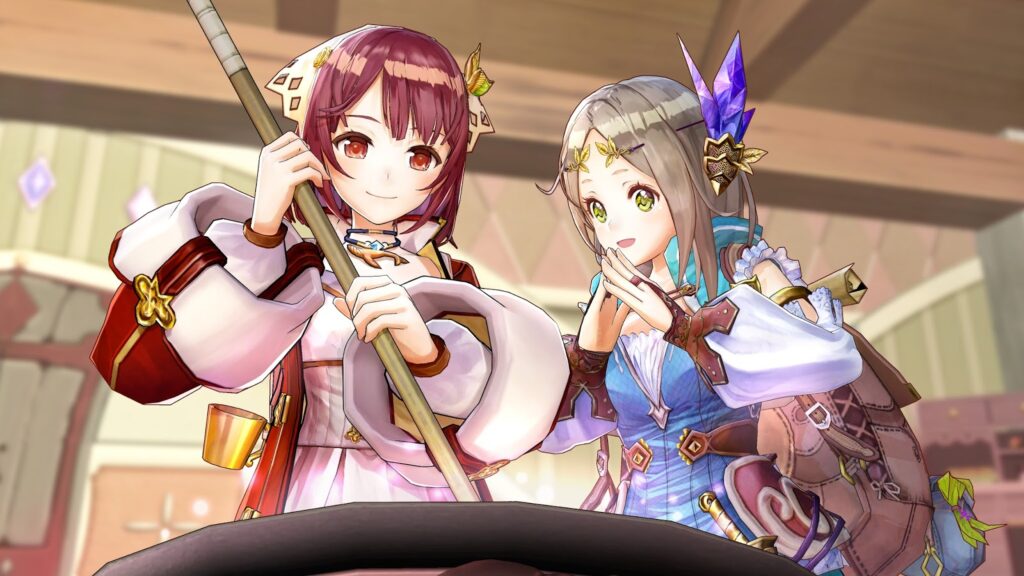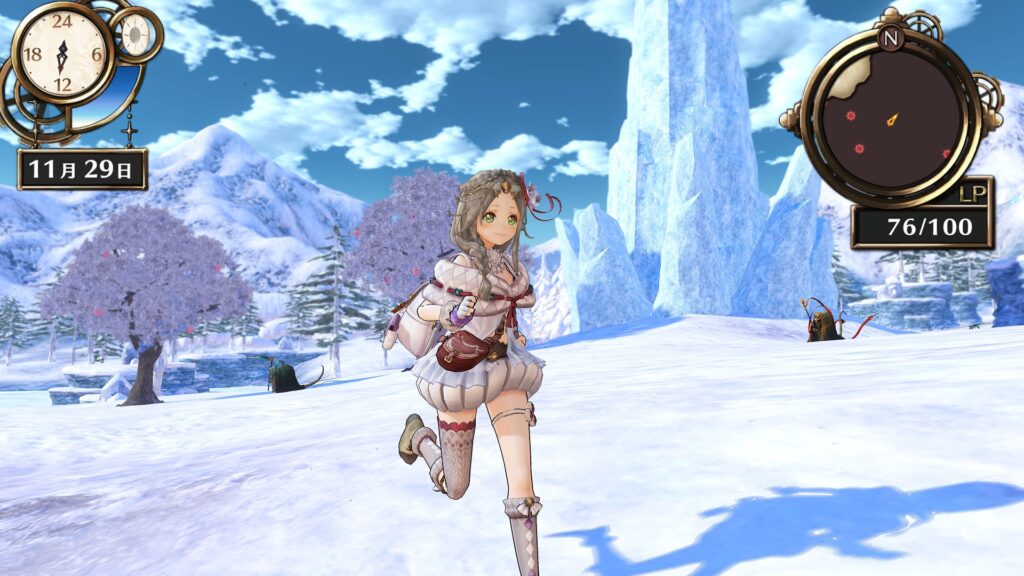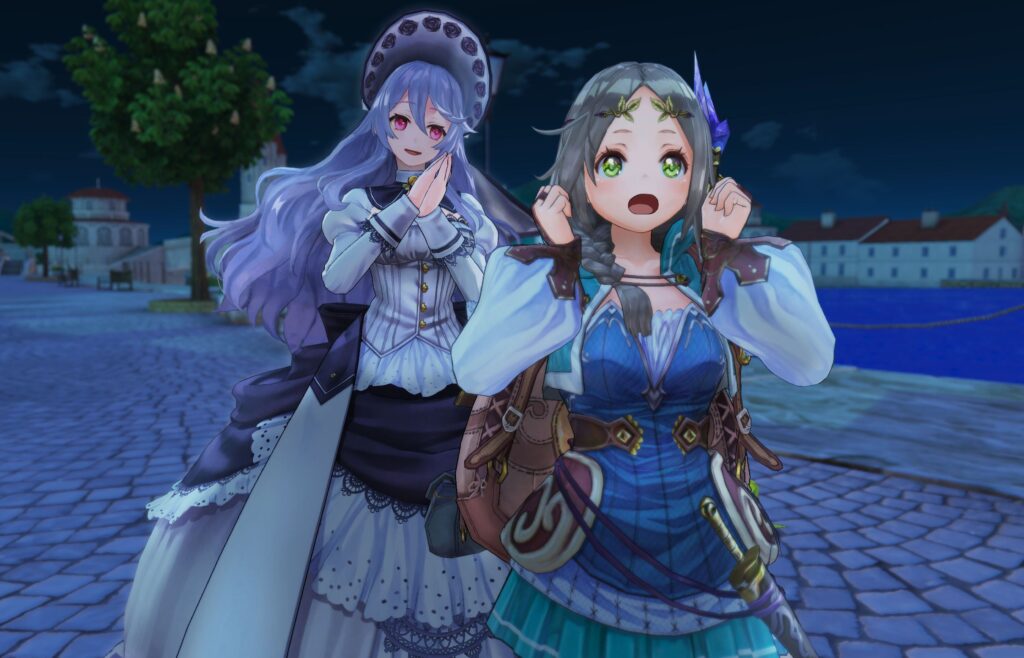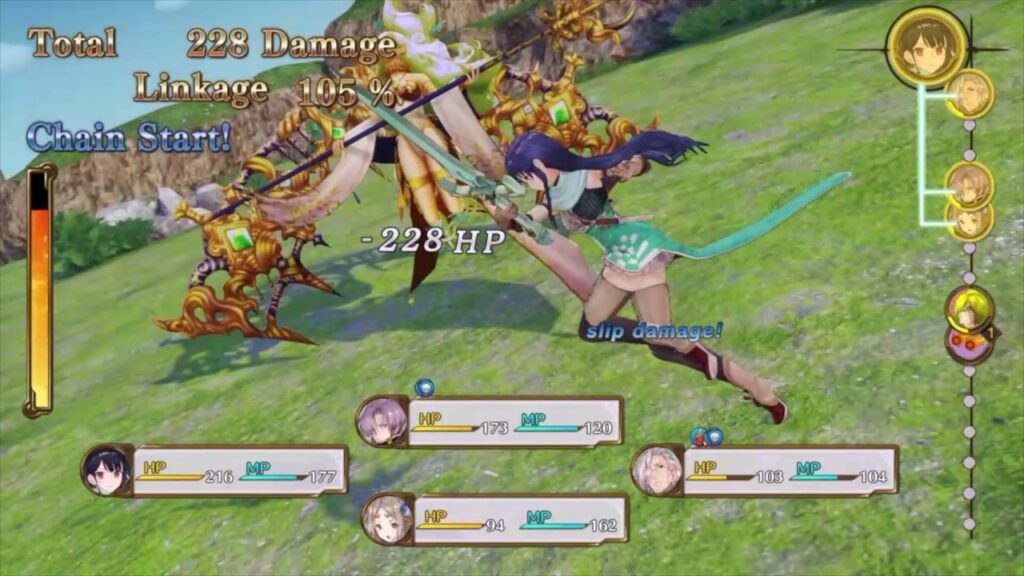The Atelier series made a great move in its last iteration, Atelier Sophie, by ditching its time management element and fully embracing the warm and cozy feeling of the game’s casual setting and mundane problems. It gave a sense of freedom that I haven’t felt when playing the first of the Playstation 3 game of the series. I could finally walk around and explore without fearing that I would miss a specific character event for good or that my playthrough would miss trophies or important items.
Atelier Firis: The Alchemist of the Mysterious Journey follows that trend, although this time it does include back a minor amount of time restriction to the journey. This step back, however, is just a slight detail in the grand scale of things and, in its entirety, Atelier Firis delivers the most complete and dense experience of the franchise yet.

Some things stay the same
Atelier Firis is the second game in the Mysterious saga of the franchise, and thus it is a direct sequel to Atelier Sophie. Although not exactly mandatory, playing Atelier Sophie makes the journey a lot more enticing, especially because the characters have plenty of references to that game, from past relationships to downright being transported from that game to this new one.
Having played Atelier Sophie also makes it easier to understand the heart of the franchise before diving into Firis’ adventure. The alchemy is basically the same, with ingredientes being tossed in the cauldron and a puzzle playing right away as you attempt to maximize points while positioning the pieces of the ingredientes within the grid. It has the same depth, elements, and general lookout of the previous game, with minor changes and the addition of a “mass alchemy” process that is used during some of the quests.
The gathering and exploration are also maintained. You move Firis around in search for ingredients, varying from ores to plants and monster’s parts. As you walk, time passes and the game changes from day to night. Here, however, is where the changes start.

A journey of exploration
As the title says, Atelier Firis is much more about the exploration than any other game in the series. The young Firis and her sister, Liane, live in the gloomy town of Ertona, hidden and locked inside a huge cavern. Firis, however, wants to know the outside world against her parents wishes, and she finally has the opportunity to do so when Sophie and Plachta appear and teach her the basics of alchemy.
Young Firis must then travel to Reisenberg and take the exam to become a licensed alchemist within a year. If she does so, her parents and Ertona’s elder will allow her to remain outside as much as she wants. Silly, right? Charming though.
The charm comes from the journey itself. In order to make the simple travel to a town interesting, the game adds a lot of new elements to the franchise.
The first and most important is scale. Although exploration is roughly the same as in other games, this time we have much bigger maps to give us a sense of a real world to explore. Many claim this is a “open-world” Atelier, but it is not exactly that much of a change. Instead of a colossal map or a central massive hub, the game still uses dozens of minor areas as usual. The only difference is that these maps are considerably bigger than those in Atelier Sophie, for example.
The second element is discovery. Each big map has connections to many others, some even featuring small villages tucked in a portion of it. You will likely wander around and discover new quests, monsters, caves, and even a few dungeons as you freely explore the land in search for ingredients or by following the game main quest.

The Time Limit
Initially, the game proposes a 30-day limit for the prologue mission, which can easily be done in a third of that time. The heart of the game, however, is in the journey to Reisenberg and the one-year time limit for young Firis to acquire at least three recommendation letters from licensed alchemists and also make the trip per see, which ends up requiring building a ship and upping your alchemy level by doing quests and crafting your very own pieces of equipment.
This second time limit is very generous though. So generous in fact it could be completely removed because you will only get close to missing it if you really waste your time collecting ingredients and re-crafting items multiple times. The presence of the time limit, however, works in making the journey feel longer, more arduous, and more engaging. Young Firis will meet new people in her way to becoming a full-fledged alchemist, helping them in any way she can, recruiting allies to talk to, and ultimately earning her fame as a wandering alchemist.
The Allies
Your party this time around is barely linked with Firis herself. In Atelier Sophie, we had a party who lived in the same town and mostly held a common starting ground and familiar relationships with Sophie. This time, however, Firis is a newcomer and she doesn’t stay put in a single location. Because of that, the allies simply jump into your party when you meet them, like random people who promptly decide to dedicate a year or more to walk around an apprentice alchemist.
It doesn’t make much sense. Fortunately, there is a LOT of stuff to do with your allies. A LOT. I mean, every place you reach, every day that passes, every combination of party members you bring to the field pops up new events and dialogues. It seems infinite at some point, with new silly conversations happening in every corner of the world and after every minor event.
This huge amount of dialogue makes up for the randomness of the party and other allies, giving a lot of background and reasoning to their behaviors, even if some of those reasonings are, like always, silly anime tropes. It is charming though, and that is what Atelier games are about anyway.

The Combat and Post-game
Well, Atelier Firis features the traditional combat of the franchise, not really improving the formula from Atelier Sophie. It still works though, especially because there is a lot to do with it. After the game “ends” and Firis gets her license, the game opens up even more, giving one hell of a post-game content to enjoy. There are new dungeons, new areas, new quests, and plenty of new items to craft and monsters to fight.
There are real challenges in the form of area bosses, the party members open up with interesting personal quests, and you get to explore the world at your own pace. It retains the carefree aspect of the franchise, yet here the exploration and freedom really kick in.
Anyway, a bettered version of the Atelier Sophie even with the return of time limits. Atelier Firis succeeds in its attempt at silly carefree exploration due to the lack of constraints and an absurd amount of events to find and see. It may offer a protagonist that is perhaps too much of the happy girl stereotype (yeah, even when compared to other Atelier games), but the rest of the party and all the stuff to discover in the world makes up for that. In the end this is a solid sequel and one that may work better to open up the door of the Atelier franchise for newcomers.
Summary
-
Production
-
Content
-
Polish
-
Concept
-
Fun
